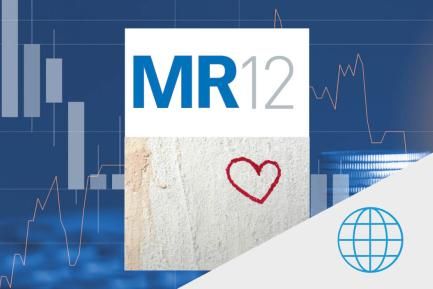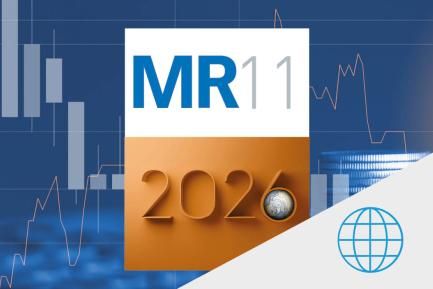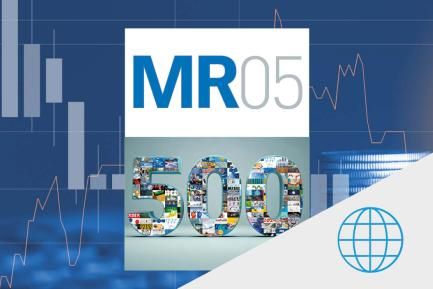
The global economic recovery: the game of hot and cold
New variant, same message: it is important that the vaccination reaches everyone
Over the past two years, the pandemic has taught us that, although it seems that all countries are facing the same phenomenon, its impact is not the same for all of them. On the cusp of the Christmas season and the cold months in the northern hemisphere, Europe is facing a new wave of infections and is confirming the impact of the vaccines: the surge in infections and mortality is proving much more pronounced in countries and regions with lower vaccination rates. Also, the new variants of coronavirus are showing no signs of calling a truce in other regions of the world. Different economic structures, uneven progress in the vaccination programmes and differentiated health policies lead us to anticipate that their impact will be felt over the coming months. Thus, the virus will remain the main risk to the economic outlook, whether in terms of its implications for changing consumption, leisure and working habits or in relation to the impact it could continue to have on global supply chains. An additional factor is the energy crisis which, together with the logistical problems, adds pressure to an already stressed inflation. Although we were right a year ago to anticipate that the vaccinations would provide a boost to economic activity, their undoubted positive effect has also failed to provide an economic miracle, particularly given their uneven deployment. Thus, between the northern and southern hemispheres, advanced and emerging economies, more and less vaccinated populations, the picture we find as we enter the festive season is as varied and multi-coloured as the Christmas lights.

ADVANCED ECONOMIES
The US economy, somewhere between vitality and overheating
Following a sharp slowdown in Q3 (after registering 1.6% quarter-on-quarter growth in Q2, the US economy grew by a modest 0.5% in Q3), some indicators for Q4 were better than expected, particularly the data related to business sentiment and the labour market. In the latter sphere, 531,000 jobs were created in October, while the unemployment rate continued to fall, reaching 4.6%. The composite Purchasing Managers’ Index (PMI), meanwhile, remained in expansionary territory in November, marking a modest decline compared to October (56.5 vs. 57.6). Despite confirming the favourable winds in the US economy, the survey points to significant increases in production costs, which sooner or later will translate into higher consumer prices, and it also confirms the supply-side tensions caused by shortages of supplies and available labour. Wage dynamics (wages rose by 4.9% year-on-year in October) highlight concerns about the economy’s overheating. In this context, Congress gave its final approval to the infrastructure portion of Biden’s investment plan, to the tune of 1.2 trillion dollars. The House of Representatives also approved the 1.75-billion-dollar social and climate spending package. This proposal, however, must now go to the Senate and will likely return to the House, so the path that lies ahead before its final approval remains long.


Warming inflation in the US is a source concern, while in the euro area signals are tepid
US inflation was once again higher than expected, rising by 0.8 pps in October to 6.2%, while core inflation stood at 4.6%. Of particular note was the widespread increase in prices across virtually all components. This is the most obvious symptom of the supply shortages, caused by the difficulties in supply chains and the «Great Resignation», at a time when the rigidity of the supply of jobs following the pandemic is exacerbating the pressures on prices. The latest data suggest that these pressures will persist during the first half of 2022, which leads us to substantially increase our inflation forecasts for the US (from 3.6 to 4.6% for headline inflation, and from 3.2 to 4.3% in the case of core inflation in 2022). In this environment, the Federal Reserve should begin to raise rates during the course of 2022 (twice, according to our latest forecasts). In Europe, meanwhile, the inflationary outlook gives us a somewhat different picture, despite sharing some common factors with the US such as high energy prices and the global bottlenecks. In particular, headline inflation in the euro area stood at 4.9% in November, while core inflation reached 2.6%. Not only are labour-market pressures not yet occurring in the euro area, but a part of the current inflation will fade for mechanical reasons beginning in January 2022, once the base effect of the temporary VAT cut in Germany in the second half of 2020 has been undone. In this regard, we will have to wait until 2023 to see rate hikes from the ECB (see the Financial Markets economic outlook article for more details).


The climate cools, but economic sentiment in Europe keeps warm
With the rise in infections in several European countries causing concern, millions of citizens are back in widespread lockdowns. Nevertheless, European confidence indicators show signs of improvement: November’s PMIs were higher than expected in Germany (52.8 vs. 52.0), in France (56.6 vs. 54.7) and for the euro area as a whole (55.8 vs. 54.2). However, these indicators do not yet reflect the impact of the tightening of health restrictions. What they do reflect is the upward price pressures, as expectations for production costs are at an all-time high, partly driven by the crisis in global supply chains. In this regard, the bottlenecks in these chains are particularly affecting the «German engine», given its high exposure to the industrial sector and the automotive industry in particular, which is highly integrated into global value chains. Also, the Ifo Business Climate Index for Germany has registered yet another decline (its fifth in a row, bringing it to 96.5 points), signalling significant downside risks to Germany’s economic growth in the coming quarters. Indeed, for the euro area as a whole, the risks for our growth forecasts are also skewed to the downside (5.1% in 2021, 4.7% in 2022), as a result of the new outbreaks and the persistent global supply problems.


The Japanese economy is back in contractionary territory
Japan’s economic activity in 2021 is experiencing a year marked by ups and downs, dependent on developments in the pandemic and the obstacles in global supply chains. Japanese GDP fell by 0.8% quarter-on-quarter in Q3 (+1.4% year-on-year), following a modest 0.4% quarter-on-quarter advance in Q2 (and a 1.1% fall in Q1). Nevertheless, the recent reopening of numerous economic activities should return the country’s activity to expansionary territory in Q4.
EMERGING ECONOMIES
China faces a front of cold air mass from the real estate sector
The Chinese economy continues to give mixed signals, between the outbreak of the crisis in the real estate sector and the recovery in industrial production and retail sales, and as supply-side pressures caused by the energy crisis and the health restrictions subside. Nevertheless, the real estate sector continues to hamper the progress of China’s economic activity, and this continues to affect investment, which fell in October in the case of fixed assets (–2.5% year-on-year compared to –1.7% in September). In a regulatory environment that is particularly unfavourable for companies with high debt ratios, the crisis in the sector will continue to pose a significant risk to the economy, given the sector’s significant knock-on effect. However, China’s authorities are already taking steps to contain the effects of this crisis, as evidenced by the relaxation of some regulations in the real estate and mortgage market and the increase in issues of debt by local governments. Despite some short-term turbulence, China’s growth is expected to remain at around 5% in 2022.

Emerging economies are particularly exposed to the heat of inflation
Although almost all emerging economies will likely recover their pre-pandemic GDP levels during the course of 2022, the surge in inflation continues to weigh down on their economic outlook, as it is affecting financial flows to these economies as well as triggering a tightening of their monetary policies. Despite the significant disparity between countries, the fiscal response and the GDP declines associated with the pandemic caused the levels of public debt in emerging economies to increase by around 10 pps (from 54.7% of GDP in 2019 to 64.3% in 2021, according to the IMF). Furthermore, the discrepancy in monetary policies this year was also clear. For instance, while Brazil was «ahead» of the yield curve in 2021, with its central bank implementing significant rate hikes, the risk of fiscal imbalances is a source of concern in the medium term. On the other hand, in Turkey, despite its low levels of debt, the recent interest-rate cuts have intensified the sharp depreciation of the Turkish lira, and in the event of a further surge in inflation they could force a U-turn in monetary policy during 2022. In this environment, central banks’ tapering in advanced economies, political instability and China’s slowdown will also continue to weigh on the economic outlook.



